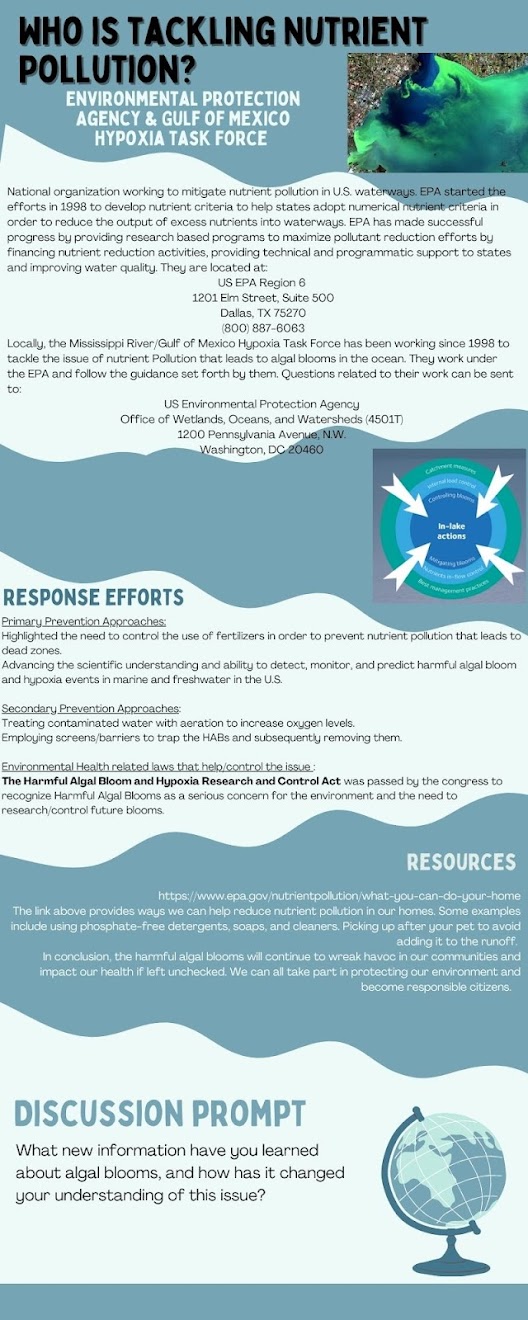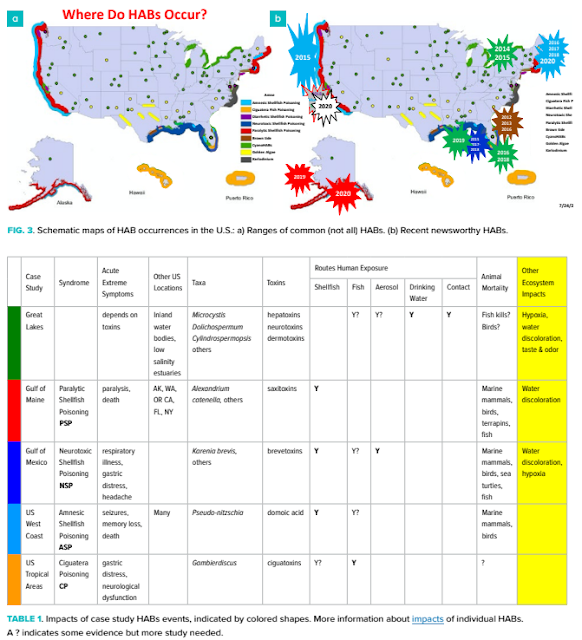Let's Help End Nutrient Pollution
Hello everyone, I’m thankful to you for following this blog. This has been a journey to learn about the important environmental issue of harmful algal blooms that impact our environment, health, animals, and drinking water supply. While it may seem like a formidable crisis that is increasing in severity and occurrence. It is however possible to control this issue as suggested by the Environmental Protection Agency (EPA). As an individual effort in your home, choose detergents/soaps that are phosphate free to reduce the excess phosphates that will runoff into bodies of water. Ensure that washing machines and dishwashers are run with a full load to help cut down on unnecessary soap runoff ( What You Can Do: In Your Home , 2022). Pet waste left behind will be added to the runoff and end up in the drains during storms, this waste also contains fertilizer-like nutrients resulting in overgrowth of algae, make sure to pick up after pets. Septic systems should be properly maintained to...

